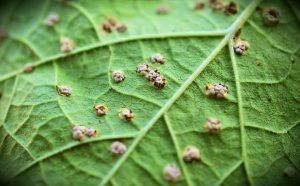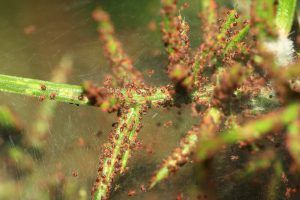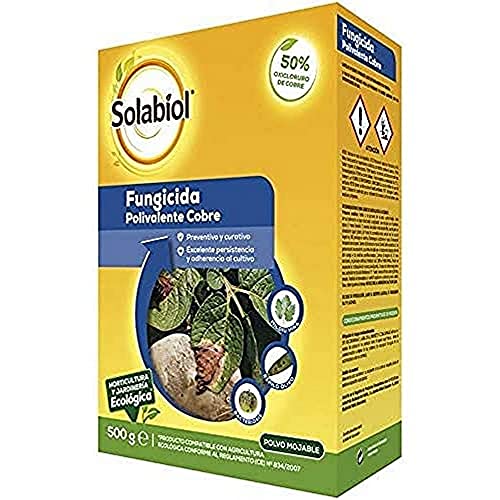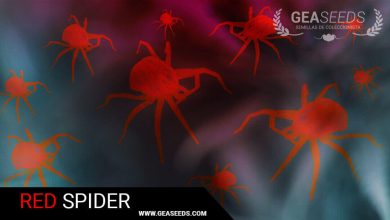Boxwood Pests and Diseases: How to Identify and Treat Them

 Boxwood is a shrub that stands out for its dense and beautiful foliage and for the ease of locating it in almost any space.
Boxwood is a shrub that stands out for its dense and beautiful foliage and for the ease of locating it in almost any space.
It is very often used to form hedges in gardens, so it is a real shame when attacked by pests or diseases.
Some are truly damaging, while others cause shallow damage, but still need to be paid attention to. What are the pests and diseases of boxwood?
It is what we will deal with in this post, so pay attention to everything that we will tell you.
Cylindrocladium buxicola
 It is the fungus that is capable of causing the greatest amount of damage to boxwood and that is why growers fear its appearance because, without fear, the fungus kills it.
It is the fungus that is capable of causing the greatest amount of damage to boxwood and that is why growers fear its appearance because, without fear, the fungus kills it.
It affects both the leaves (producing defoliation) and the wood (which damages it), so the useful life of the bush is lost.
For its attack to occur, it is necessary that there is a warm temperature (being frequent in summer), around 25º C. Another point that is favorable to it is that humidity is generated, especially when the foliage is wet.
Rain is an agent that maximizes the problem, since the drops that fall on a contaminated leaf are filled with the mycelium and infect the following ones. Therefore, you will also have to establish a localized irrigation method, preferably drip and not sprinkler because it will produce the same effect as rain.
How can you act then to prevent it from spreading so much? The first thing is to detect it in time and you will achieve that by reviewing the leaves. These change their texture, appearing much more oily, while dark spots are produced on the surface.
The moment you suspect that the cylindrocladium buxicola has attacked, you will only have to prune the affected area and clean very well, burning the remains.
Only in this way will you be able to avoid expansion and all your boxwood from being lost, since it has a probable life cycle of up to 3 years. It is sometimes known as box blight.
Rust
 It is another disease caused by fungi that significantly affects boxwood and causes considerable damage.
It is another disease caused by fungi that significantly affects boxwood and causes considerable damage.
It manifests itself first in the leaves, which are filled with brown spots on the tips, as if it were rust.
A short time later, the same affected leaves begin to fill with a series of black pustules on the back that weaken them. This produces defoliation, but it does not tend to be as deadly as blight, so it can be attacked with specific fungicides for these cases.
boxwood flea
 It is a plague that is common in this species, hence its name, and that is evidenced by a small, green body with long legs and wings.
It is a plague that is common in this species, hence its name, and that is evidenced by a small, green body with long legs and wings.
These last characteristics are ideal to allow rapid mobility from one place to another, even as a protection mechanism against threats.
Its larvae feed on sap, which causes leaves to turn yellow, starting at young shoots. As the flea passes through the plant in its larval phase, it leaves a layer of white wax on the surface that prevents new shoots from emerging.
All this, added, causes problems for the execution of photosynthesis processes and the normal metabolism of the structure, which weakens the boxwood. The good news is that it is a pest that only has one annual generation, unlike other species that can have up to 5 or 6 generations.
Attacking the pest is more or less simple and will only consist of cutting the shoots that are infected by the white wax so that new ones are born. If possible, capture adults with traps to prevent them from laying more eggs.
boxwood wilt
 It is another disease that is due to the attack of a fungus that produces negative effects on branches and leaves, turning them yellow and sapping strength.
It is another disease that is due to the attack of a fungus that produces negative effects on branches and leaves, turning them yellow and sapping strength.
It gives a break if we take into account everything seen above for other diseases because it is a fungus that does not spread to other areas of the plant.
If it projects much more, you will notice a noticeable difference between the bark that is healthy and the bark that is infected, which turns dark. Also, the plant may begin to lose its leaves early, causing you concern and detracting from the ornamental value that the boxwood projects.
Another important detail regarding this disease is that it usually manifests itself in plants that are damaged by some other problem, it is not common in healthy boxwood.
And, as it does not spread, it is possible to deal with the problem by carrying out a localized pruning of the branches that are affected. Of course, you will have to pay attention to the reasons why the disease appeared to fight, be it another disease or another pest.
Red spider

Undoubtedly, it is a very frequent pest in all types of crops and usually appears in areas with hot and dry climates.
They like to attack the youngest leaves first, feeding on the internal sap. When they do, they leave a mark on them.
The eggs are usually located on the underside of the leaves, being possible about 6 generations per year, although the life span of each spider is approximately one month.
It is worth attacking it with pesticides to avoid hibernation and wake up to do damage in the next period. The good news is that if it rains, they will stop reproducing and causing damage.
Boxwood is a hardy shrub that tends to hold up well most of the time. Even when attacked it can be recovered. The most serious damage is caused by boxwood blight, which can quickly lead to death, so we can never lose sight of them.
Sources consulted
- Boxwood Fire Blight, F Baysal-Gurel, P Liyanapathiranage – tnstate.edu
- The invasion of the boxwood moth (Cydalima perspectalis) and its effects in Catalonia, MS Vidal, PC Haire, JM Reig – XXXVIII – researchgate.net
- Boxwood Volutella Rust, F Baysal-Gurel, P Liyanapathiranage – tnstate.edu
- The plague of the » boxwood moth » or «Chinese moth» (Cydalima perspectalis) attacks the boxwood hedges (Buxus sempervirens) of Campo de San Francisco and others…, TED González – Science and Technology Newsletter, 2019 – dialnet. unirioja.es
- Agricultural and Forest Pests, J Selfa, JL Anento – Bull. SEA, 1997 – sea-entomologia.org
Maybe you are also interested in:







![Photo of Portulaca: [Cultivation, Irrigation, Associations, Pests and Diseases]](https://www.complete-gardening.com/wp-content/uploads/2022/08/portulaca-cultivation-irrigation-associations-pests-and-diseases-390x220.png)
![Photo of Boxwood cuttings: [Concept, Season, Rooting and Sowing]](https://www.complete-gardening.com/wp-content/uploads/2021/06/Que-significa-plantar-por-esquejes-7-390x220.jpg)

